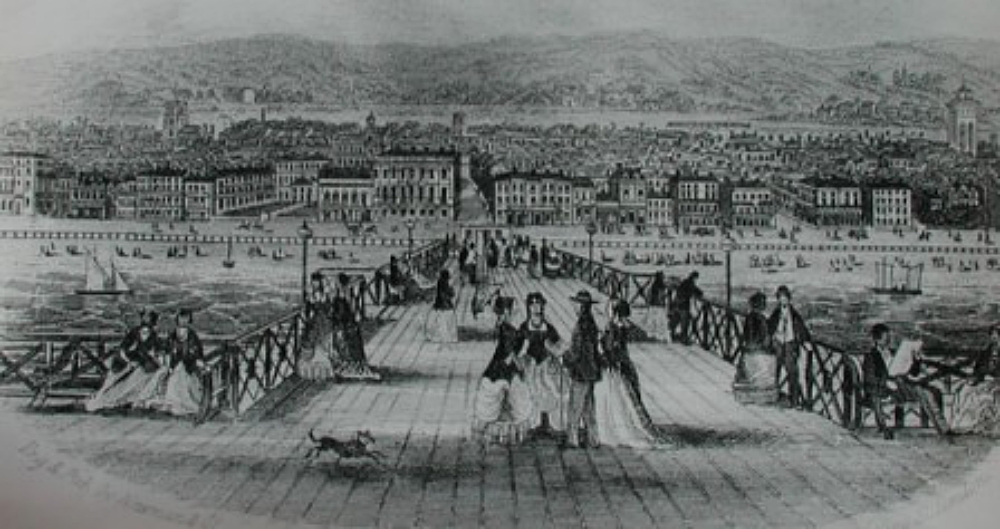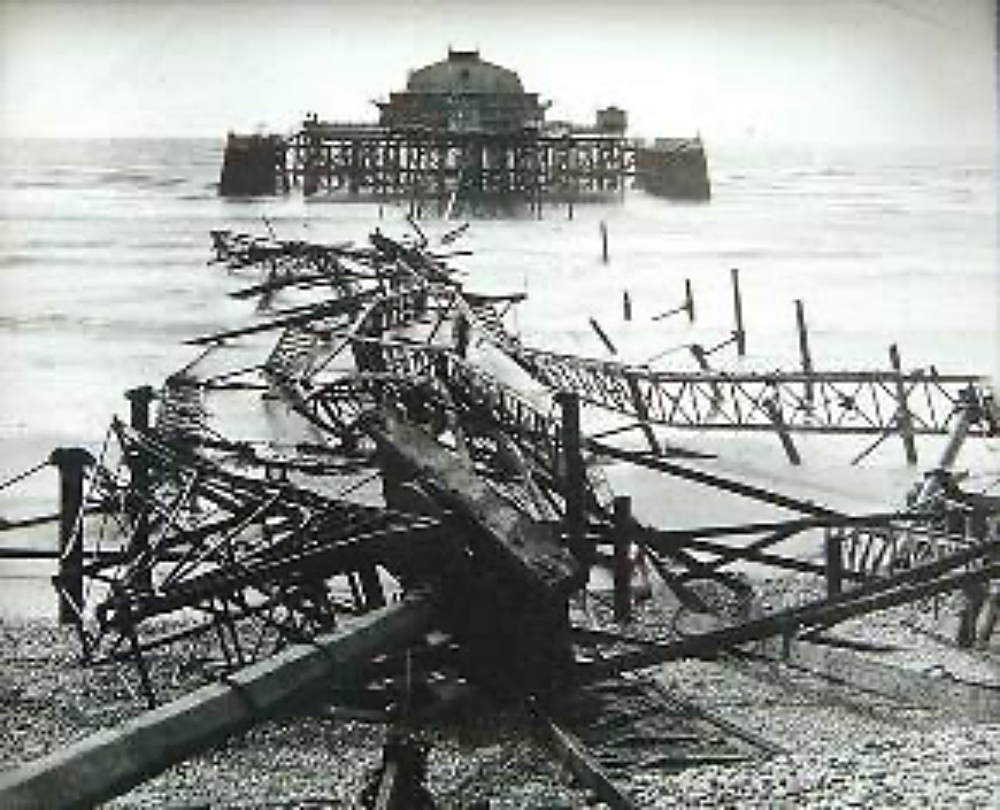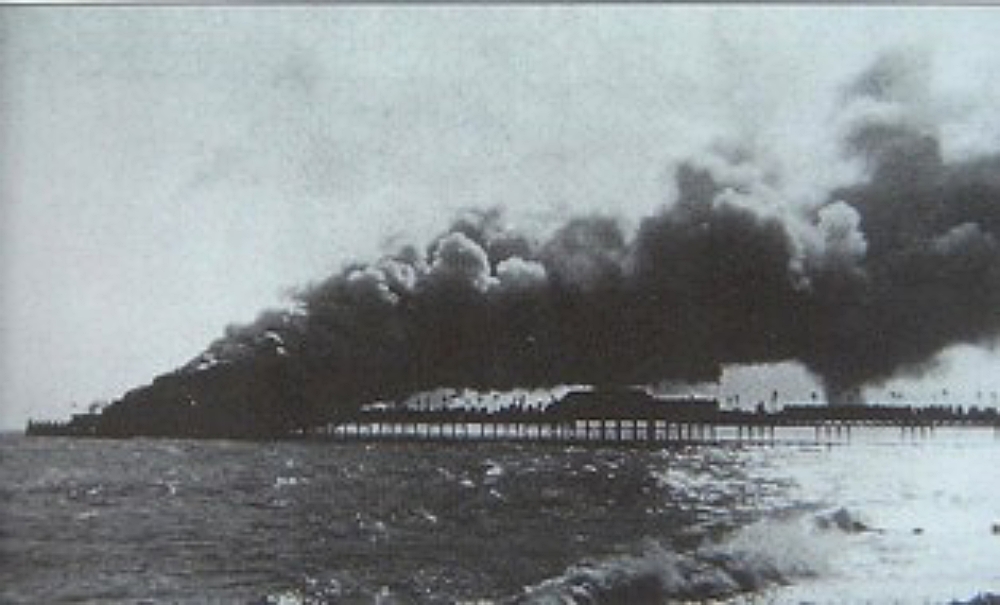Saga of Worthing Pier
IF you think Brighton’s skeletal West Pier has been through the wars, consider the fate of the pride of Worthing’s seafront.

Brighton’s skeletal West Pier has been through the wars, consider the fate of the pride of Worthing’s seafront.
The Worthing Pier that you see today has a history of not only being ravaged by flames and blown down by a frightening storm but also of being blown up by high explosive – and that’s just the middle section!
Yet this summer’s holidaymakers will find the current Worthing Pier in sparkling condition, even after many turbulent years as the main focus of Worthing’s seafront.
The town had an earlier pier, a simple iron jetty 960 feet long, with a toll hut and sea-end platform. This was erected in 1862, was designed by Sir Robert Rawlinson and cost £6,500.
It attracted many visitors at a time when the seaside was just becoming a popular destination for the holidaying masses, brought directly to the town from London in 90 minutes by the newly inaugurated steam-powered railway.
But less than two decades later, the town’s politicians and businessmen were voicing opinions that the rather precarious-looking pier structure was hardly grand enough to mark the occasion of Queen Victoria’s Jubilee.
This led, in 1887, to the complete reconstruction and embellishment of the pier by the renowned Victorian civil engineer, James Mansergh, who insisted it should include a southern pavilion and landing stage.
In general, the pier remains a tribute to his skills, which included experience, gained as the most distinguished water engineer of his day. A man of diverse talents, he also designed dams, reservoirs, sewerage works and railways.
No wonder Worthing’s new pier was treated to a grand opening on July 1 1898, by the Queen’s representative in Sussex, Viscount Hampden.
Even the best engineers have occasionally failed to account for every aspect of the notoriously fickle English weather and Mansergh was no exception.

Over Easter weekend, 1913, a year before the outbreak of the First Great War, one of the most violent storms in Worthing’s history destroyed the decking of Mansergh’s pier and led to the collapse of some of its girders.
The sea-end pavilion was thus isolated from the rest of the structure and went down in local history as “Worthing’s Easter Island”. It became the subject of the biggest-selling picture postcard in Worthing history.
It probably wouldn’t happen today but in 1913, the pier was totally reconstructed in less 12 months and was officially reopened the following May by the Lord Mayor of London.
The First Great War took its toll, in terms financial rather than structural. By 1921, the Pier, experiencing money troubles, had been “localised” – rather than nationalised – and was taken over by the borough council.
A completely new domed pavilion was built at the land end of the pier in 1925, to become one of the town’s prime entertainment centres. Only downside of this development was removal of the elegant deco-style twin kiosks that had stood guard at the pier’s entrance since 1884.
Eight years of good luck followed before the pier suffered its next disaster.

Firemen were hampered by the nearest water hydrant being 500 yards away but helped by more than 300 holidaymakers, many in bathing costumes, who tore up the pier’s wooden planking to prevent flames reaching the Pier Pavilion.
In a desperate measure, a car was driven onto the pier and loaded by a human chain with the most valuable items of furniture from the blazing southern pavilion, which were driven to safety.
The final indignity inflicted on the pier came during the war when, in 1940 the centre section of the structure was blown out of the water to prevent an expected German invasion force using it as a landing stage.
Less than a year after World War Two ended, Worthing Pier had its luckiest escape of all, when a large sea mine drifted between the girders, missing explosive contact and the inevitable consequences by a mere three inches.